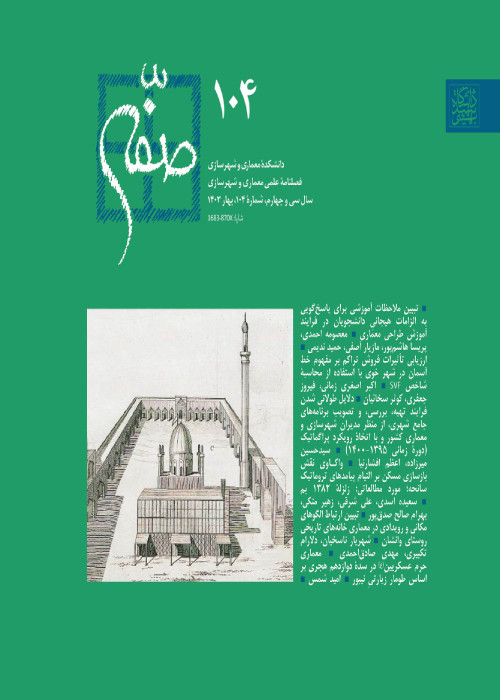A Comparative Study on the Difference between the Perception of Justice in High-income and Low-income Neighbourhoods of Tehran (Cases of Study: Neighbourhoods of Elahieh and Vali-e Asr Township)
The Iranian capital has suffered from inequalities in the distribution of services and the economic class segregation for decades. The residents of north Tehran are mostly affluent enjoying much better access to urban amenities and infrastructures, whilst those of south Tehran mostly have less incomes with poorer access to services. This inequality is reflected in property prices of northern and southern neighbourhoods. However, the difference between objective indicators such as services, green space and higher income does not seem to be reflected in their respective residents’ satisfaction levels. The focus of this study is mainly on measuring the subjective indicators of justice perceived by Tehran citizens. Based on theoretical foundations and previous surveys, the present paper starts with setting out the justice criteria according to Tehran citizens. It then deals with the question of what differences there are in the perception of justice between the inhabitants of the different neighbourhoods of Tehran. In other words, the purpose of this study is to explain the views of citizens living in Tehran on the indicators of justice. According to studies, the people of Tehran measure justice through four criteria: the distance between the rich and the poor, state aid for the poor, law enforcement and lack of corruption. On this basis, the present article is based data collected through questionnaires, followed by the examination of these criteria in Elahieh (north of Tehran) and Vali-e-Asr township (south of Tehran) neighbourhoods. The survey shows that the two neighbourhoods have significant differences in terms of urban services, land prices and objective indicators, with Elahieh enjoying much better status than Vali-e-Asr. However, there is no meaningful difference between these neighbourhoods in terms of the perception of justice. In other words, even in a neighbourhood with suitable physical conditions, there is higher sense of justice compared to a physically poor neighbourhood. Finally, the paper shows that physical improvements in the urban environment have failed improve a sense of spatial justice.
Justice , Spatial , Perception , Evaluation , Subjective , Tehran
- حق عضویت دریافتی صرف حمایت از نشریات عضو و نگهداری، تکمیل و توسعه مگیران میشود.
- پرداخت حق اشتراک و دانلود مقالات اجازه بازنشر آن در سایر رسانههای چاپی و دیجیتال را به کاربر نمیدهد.


